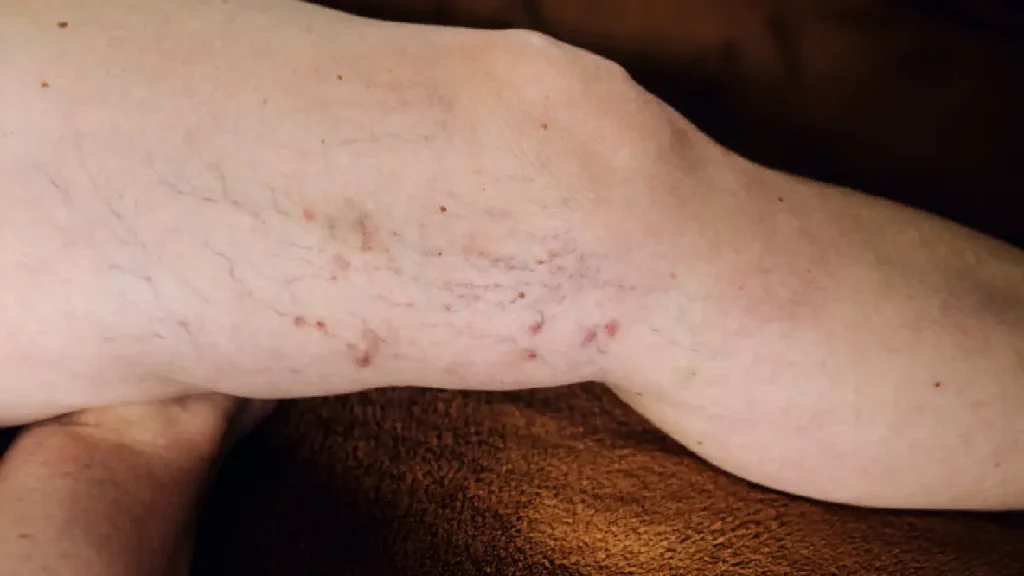At Vein Doctor for Women, we understand that the appearance of spider veins and varicose veins can be concerning. These common vein conditions not only affect your appearance but can also cause discomfort. To help you understand the differences between these conditions and explore the best treatment options, we’ve put together this guide. Let’s address some of the most frequently asked questions about spider veins and varicose veins.
What Are Spider Veins and Varicose Veins?
Spider veins and varicose veins are both symptoms of chronic venous insufficiency, a condition in which the veins have trouble sending blood from the limbs back to the heart. In healthy veins, blood flows smoothly from the extremities to the heart because of the vein valves—one-way doors that allow blood to flow toward the heart but not backward due to gravity. When the vein valves malfunction, blood flows backward due to gravity and accumulates in the leg veins. The accumulation of blood in leg veins leads to spider veins and varicose veins.
Despite their similarities, they have distinct characteristics and implications for your health.
- Spider Veins: Spider veins are small, thin veins that lie close to the surface of the skin. They often appear red, blue, or purple and resemble a spider’s web or tree branches. Typically, they are found on the legs and face.
- Varicose Veins: Varicose veins are larger, swollen, and twisted veins that often bulge above the surface of the skin. These veins are usually blue or dark purple and most commonly appear on the legs and feet. Varicose veins can cause aching, swelling, and discomfort.
What Causes Spider Veins and Varicose Veins?
The causes of spider veins and varicose veins are multifaceted, involving a combination of genetic, hormonal, and environmental factors.
- Genetic Factors: Both conditions can be hereditary. If your parents or grandparents had spider veins or varicose veins, you might be at a higher risk of developing them.
- Hormonal Changes: Hormonal fluctuations, especially in women, can contribute to the development of these vein conditions. Pregnancy and menopause are common triggers.
- Lifestyle and Environmental Factors: Prolonged standing or sitting, lack of exercise, and obesity can exacerbate the likelihood of developing vein problems.

How Can You Tell the Difference Between Spider Veins and Varicose Veins?
Understanding the visual and symptomatic differences between spider veins and varicose veins can help you identify them more easily.
Visual Differences
- Spider Veins: Fine, web-like appearance; red, blue, or purple in color; flat or slightly raised.
- Varicose Veins: Bulging, twisted, and rope-like appearance; blue or dark purple in color; raised above the skin surface.
Symptomatic Differences
- Spider Veins: Usually asymptomatic but can cause a mild itching or burning sensation.
- Varicose Veins: Often accompanied by pain, throbbing, swelling, heaviness, and fatigue in the legs. Severe cases can lead to skin changes, ulcers, and bleeding.
Are Spider Veins and Varicose Veins Harmful?
While spider veins are generally harmless and considered a cosmetic issue, varicose veins can lead to more serious health concerns if left untreated. Spider veins rarely pose any health risks but can affect your self-esteem and confidence due to their appearance. However, if spider veins are caused by underlying chronic venous insufficiency, they can eventually lead to the long-term complications of untreated vein disease.
Varicose veins are almost always caused by underlying vein disease. As such, untreated varicose veins can lead to complications like:
- Venous Ulcers: Painful open sores, usually around the ankles, that can be difficult to heal and may become infected.
- Superficial Thrombophlebitis: Inflammation of veins just under the skin, often accompanied by blood clots and localized pain.
- Deep Vein Thrombosis (DVT): Dangerous blood clots that form in deep veins, potentially leading to life-threatening conditions like pulmonary embolism.
- Skin Changes: Discoloration, thickening, and hardening of the skin around the affected veins, often referred to as lipodermatosclerosis.
- Bleeding: Spontaneous bleeding from varicose veins, which can occur even with minor injuries and may be difficult to control.
How Are Spider Veins and Varicose Veins Diagnosed?
Diagnosing spider veins and varicose veins accurately is crucial for determining the most effective treatment plan. At Vein Doctor for Women, we use a combination of a detailed physical examination and advanced diagnostic tests to assess your condition thoroughly.
Physical Examination
During your initial consultation, we conduct a comprehensive physical examination to evaluate the health of your veins. Here’s what you can expect:
- Medical History Review: We begin by discussing your medical history, including any family history of vein problems, your symptoms, and any previous treatments you may have had.
- Visual Inspection: We carefully examine your legs while you are standing and sitting to observe any visible signs of spider veins or varicose veins. This includes noting the size, color, and pattern of the veins and any skin changes, such as discoloration, ulcers, or swelling.
- Palpation: By gently pressing on the veins, we can assess the degree of swelling and check for tenderness or hardening of the veins. This helps us determine the extent of vein damage and identify any areas of concern.
- Functional Assessment: We may ask you to perform specific movements, such as standing on your toes or flexing your legs, to observe how your veins respond.
- Symptom Discussion: We discuss your symptoms, such as pain, heaviness, itching, or cramping. Understanding the severity and frequency of your symptoms helps us gauge the impact of the vein condition on your daily life.
Diagnostic Tests
We often use advanced diagnostic tests, such as ultrasound, to gain a deeper understanding of your vein health. An ultrasound is a non-invasive imaging test that provides detailed images of your veins and assesses blood flow.
During the ultrasound, you will lie on an examination table, and a gel will be applied to your skin over the area being examined. A handheld device called a transducer is then moved over the gel-covered skin. The transducer emits sound waves that penetrate the skin and reflect off the blood vessels, creating images on a monitor. This allows us to see both the structure of your veins and the direction and speed of blood flow within them.
The ultrasound helps us visualize the size and shape of your veins, detect any abnormalities, and assess the condition of the vein walls. We can identify dilated or twisted veins, as well as any blockages or clots. By combining a thorough physical examination with detailed ultrasound imaging, we can accurately diagnose the severity of your spider veins or varicose veins and develop a personalized treatment plan tailored to your needs.
What Are the Treatment Options for Spider Veins and Varicose Veins?
At Vein Doctor for Women, we offer minimally invasive vein treatments tailored to address both cosmetic concerns and medical symptoms associated with spider veins and varicose veins.
Spider Vein Treatments:
- Sclerotherapy: This involves injecting a solution into the spider veins, causing them to collapse and fade over time.
- Laser Therapy: High-intensity light is used to close off the spider veins, making them gradually disappear.
Varicose Vein Treatments
- Endovenous Laser Therapy (EVLT): A laser fiber is inserted into the vein, delivering heat to seal it shut.
- Radiofrequency Ablation (RFA): Similar to EVLT, but uses radiofrequency energy to close off the vein.
- Foam Sclerotherapy: Larger varicose veins can also be treated with a foam version of the sclerosing solution.
- Microphlebectomy: Small incisions are made to remove the varicose veins directly.
How Can You Prevent Spider Veins and Varicose Veins?
While genetic factors cannot be changed, several lifestyle changes can reduce one’s risk of developing spider veins and varicose veins.
Lifestyle Changes:
- Exercise Regularly: Activities like walking, swimming, and cycling can improve blood circulation.
- Maintain a Healthy Weight: Reducing excess weight can alleviate pressure on your veins.
- Elevate Your Legs: Whenever possible, elevate your legs to encourage blood flow back to the heart.
- Avoid Prolonged Sitting or Standing: Take breaks to move around and stretch if your job requires long periods of sitting or standing.
- Compression Stockings: Wearing compression stockings can help support your veins and improve circulation, especially if you’re prone to developing vein issues.
When Should You See a Vein Doctor?
If you’re experiencing symptoms or are concerned about the appearance of spider veins or varicose veins, it’s important to consult with a vein specialist.
Signs to Watch For:
- Persistent Pain or Swelling: If your legs feel heavy, achy, or swollen consistently.
- Skin Changes: Darkening of the skin or development of sores near the affected veins.
- Bleeding Veins: If a vein begins to bleed, even from a minor injury.
At Vein Doctor for Women, we are committed to providing you with the highest quality care and the most effective treatments for your vein concerns. Our team of board-certified vein doctors is here to help you understand your condition and guide you through your treatment options.
Contact Vein Doctor for Women
Understanding the differences between spider veins and varicose veins is the first step toward managing and treating these conditions. Whether you’re seeking relief from discomfort or looking to improve the appearance of your legs, our expert team at Vein Doctor for Women is here to support you every step of the way. Remember, early intervention and a proactive approach can make a significant difference in your vein health. If you have any questions or would like to schedule a consultation, please don’t hesitate to contact us.






